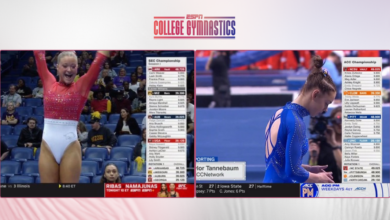Drehs on Wittmack’s ‘Triathlon’
http://www.youtube.com/watch?v=be0U_2B2cuY
On the surface, Charlie Wittmack looks like anything but a world-class athlete.
But deep within his 5-foot, 7-inch, 145-pound frame is a burning need to push his body beyond its limit.
He says it’s an addiction: “I’ve never done cocaine. I’ve never given birth, but these experiences are like that.”
It’s the reason last summer Wittmack risked everything he had — his life, his marriage, his money and his role as a father — to complete a self-made event he dubbed “The World Triathlon.”
Starting at the origin of the River Thames in England, the plan was to swim, cycle, run and climb his way 10,000 miles across 13 countries until he stood on the summit of Mount Everest.
But then the adventure began, and everything changed.
ESPN.com Senior Writer Wayne Drehs tells the emotional tale of a man who was ready to give up everything to try to find himself, only to discover that the answers he was looking for he had left behind.

The Outside The Lines branded story launches Thursday on ESPN.com, with additional story coverage in ESPN The Magazine on newsstands Friday, ESPN Radio’s The Sporting Life with Jeremy Schaap Friday at 10 p.m. ET and ESPN’s Outside the Lines morning TV show on Sunday.
The story on ESPN.com features an original interactive presentation that combines stunning imagery, quick-paced video clips and emotionally-driven text to immerse sports fans in Wittmack’s story in a way never before seen on ESPN.
Drehs talks to Front Row about his journey with Wittmack.
FR: What drew you to Charlie’s story initially?
WD: Initially, it was the jaw-dropping journey. Connecting the English Channel to Mount Everest with a 9,000-mile bike ride just seemed insane. But then after I met Charlie, it was all about the man. I was drawn to his personality, the never-ending conflict between life as an explorer and life as a conventional family man and the question of why. Why was he doing this? Who leaves his wife, his son, his job to attempt some 10,000-mile cross-continent athletic extravaganza?
When I started reporting this a year ago, even Charlie didn’t have that answer. I remember something he said to me the first time we met. “If you can figure out what’s going on inside my head, let me know. Because I never can.” So that was the goal. To try and figure out who he is and why he was doing this. The pursuit of that answer is what transforms this from a story about a wild adventure into something much deeper.
FR: You used multiple platforms (ESPN.com, ESPN The Magazine and ESPN’s Outside The Lines) to package this piece for readers and viewers. Why is this particular story a good fit across those platforms?
WD: I was just talking about this with Charlie the other day. I’m not sure there is another media organization in the country that could have told his story with the level of detail and emotion as ESPN. This is an incredibly complex story. Charlie was on the road for a year. Nearly every day something happened that would have made a great feature by itself. He went through enormous personal struggles. He nearly died. He grew and changed as a person. All the while his wife and son were left behind. To try and capture all of this in a 10-minute TV feature would be impossible. To try and tell the complete story in the Magazine would take up almost an entire issue. Charlie’s story is too big for a single media outlet to wrap its head around. And that’s why our multi-platform approach works. In the Outside The Lines story, you get a snapshot of who he is, what this was like for him. In The Magazine piece, written largely from Cate’s perspective, you learn what was like for her to put life on hold while her husband chased his dreams — and why she did it. And the multimedia-driven ESPN.com presentation brings it all together with stunning video, eye-opening photography and an editorial insight that isn’t possible in the other mediums. Sure, there is some overlapping in the stories. It would be impossible for there not to be. But at the same time, I feel like you walk away from each of the three pieces learning something different about Charlie and his adventure. And to me, that’s the definition of what a cross-platform story should be.
FR: After following him all these years, what in your opinion was Charlie’s most impressive feat?
WD: That’s a hard question. There are so many things that are impressive about this. Just the fact that he was able to stay alive is amazing, considering some of the places he traveled through. But if I had to pick one, I would say the Channel swim. I was in the support boat the day Charlie swam across the English Channel and I’ve never been more in awe of an athletic performance in my life. For 12 straight hours, the man didn’t stop swimming. Just think about that tomorrow morning when you get out of bed at 7 a.m. Think about swimming in 63-degree water, with jellyfish and massive container ships around you, with waves crashing over your back … think about swimming without rest until 7 p.m. that night. It’s incredible. You couldn’t see France when he started. You couldn’t see the white cliffs of Dover, England when he finished. They don’t allow you to enter France on a channel swim so you have to get in the support boat and ride back to England after you finish. On the ride back, we were hauling. The waves were crashing into the boat, we’re rocking up and down and it still took more than an hour. And I remember thinking to myself this guy just swam every single foot of this boat ride. It was amazing.







